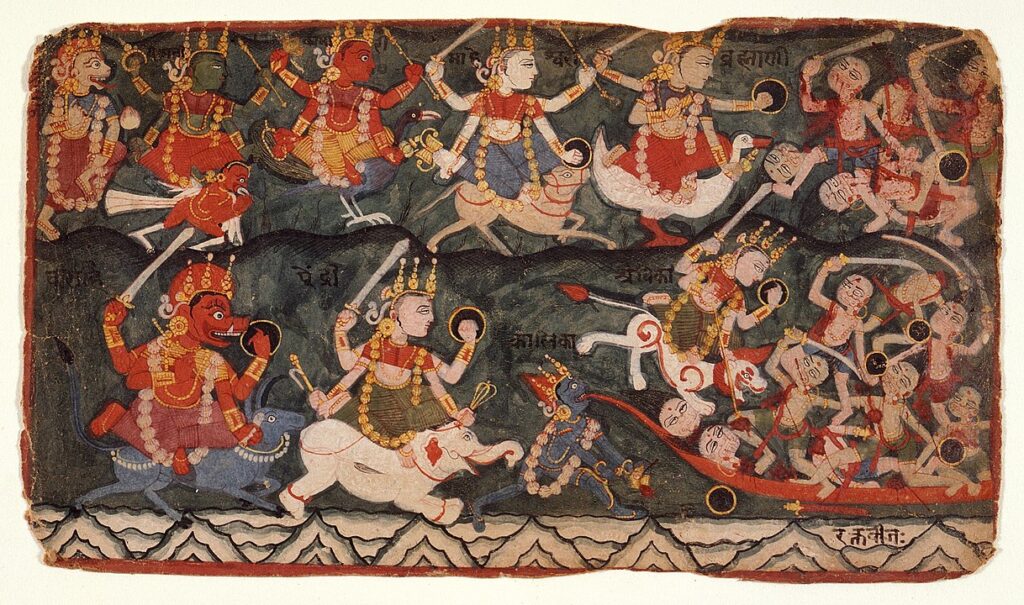– Smt. T.S. Rajalakshmi
Divine Vahanas
Vahana in Sanskrit means “that which carries,” a vehicle for Gods and Goddesses. All Gods and Goddesses have their vehicles (Divine Vahanas or Vahanams). The vehicle may be a bird or an animal. Yet, they too are considered with high respect and offered prayers.
They become vehicles to serve them out of devotion. They are staunch devotees who are ready to serve the Almighty at any point in time.
Lord Ganesha – Mooshika
“Mooshika” (mouse), is the vehicle for Lord Ganesha who is worshipped first in all types of worship in the Hindu Tradition. The interesting story is that “Mooshika” was Gandharva Krauncha in his previous birth and due to a curse he was born in the rat family. He was disturbing everybody in the hermitage of Sage Parashara. Gajanana who was there caught hold of him and warned him of dire consequences.
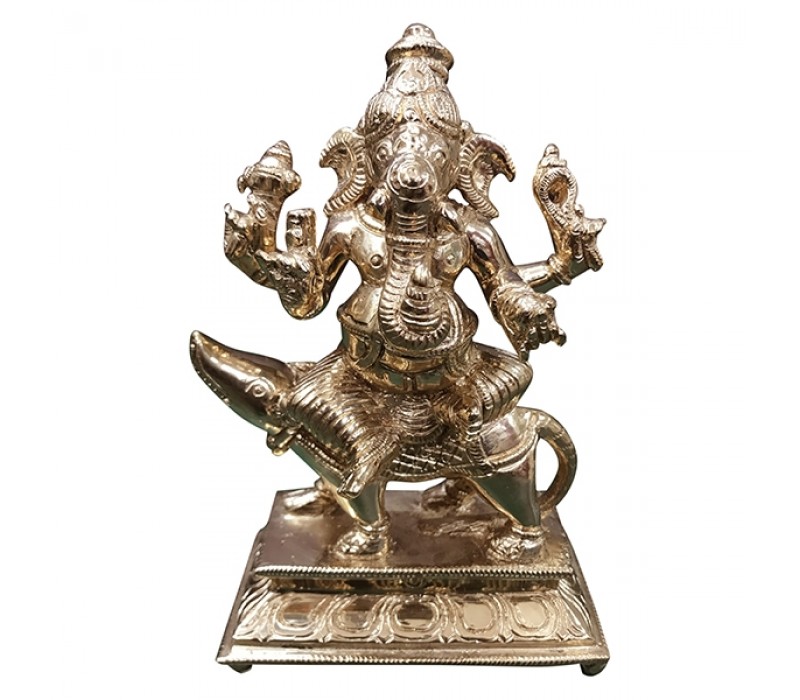
Mooshika surrendered to Gajanana and offered to serve him as his vehicle always. Ganesha is also known as “Mooshika Vahana” and is sung as “Mooshika Vahana Modhaka Hastha”. Lord Ganesha mounted on Mooshika teaches us that one should not be distracted by whatever he sees and be wavering in his mind and that one can be controlled by the grace of the Lord.
Lord Subramanya – Surapadma
“Surapadma–the Peacock”, is the vehicle of Lord Karthikeya. Surapadma was a cruel Asura who was torturing the angels. When Lord Muruga fought with Surapadma vigorously, the latter took the form of a tree. Lord Muruga split the tree into two halves turning one half into Peacock and the other into a rooster (which is the symbol for Muruga’s flag).
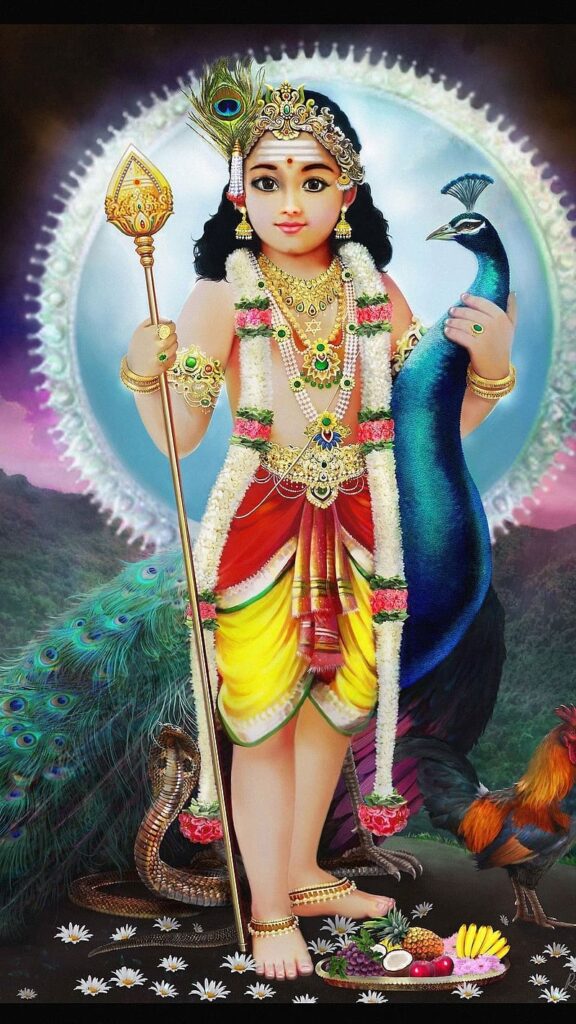
Surapadma surrendered to Lord Muruga and became his vehicle. Lord Muruga is known as “Mayil Vahana”. There is a famous poem as “Erumayil EriVilayaduMugam” in which the vehicle is primarily called upon along with the Lord. Lord Muruga riding on a peacock teaches that even though one takes pride in one’s beauty, he has to submit to the Lord.
Lord Siva – Nandeeswara
“Nandi”, the divine bull, is the vehicle for Lord Siva. He is also the Dwarapalaka of Lord Siva. Nandi means happiness, joy, and satisfaction. He was the son of Sage Shilada who was an ardent devotee of Lord Siva. He wanted a son to be born to serve Lord Siva. Thus, with the Lord’s blessings, Nandi was born to serve as his gatekeeper.
Special Abhishekam and Alankaram is performed during the early hours (Pradosha kaala). He is considered to be the chief of Siva Ganas and a primary Guru. He was a preceptor to Patanjali and Thirumulainathar as well and hence called Nandikeshwara. All Siva temples have Nandi in the front-facing Lord Siva. It is believed that if anyone confides his wishes in Nandi’s ears, he would convey them to Lord Siva and Mother Parvati and get them fulfilled.
“Bairava” who is also the manifestation of Lord Siva has a dog as his vehicle. One can identify Siva temples from the outside by seeing Nandi idols on the walls of the temple.
Many Siva temples have very big Nandi idols as
- Rameshwaram temple,
- Brihadeeswara temple and
- Gangaikonda Chozhapuram temple in Tamil Nadu,
- Lepakshi temple,
- Virupaksha temple in Hampi,
- Chamundeshwari Temple at Chamundi Hills,
- Hoysaleshwara Temple at Halebid in Karnataka,
- Bhanjanagar temple at Orissa and
- Mahanandiswara temple in Kurnool.
Devotees recite the shloka on Nandi during Lord Siva’s darshan: “Nandikesha Mahaabhaaga Sivadhyaana”. A Great Saiva Devotee named Nandanar was not able to view Lord Siva (Sivalokanathar) at Thirupunkur in Tamil Nadu as Nandi was obstructing the darshan.
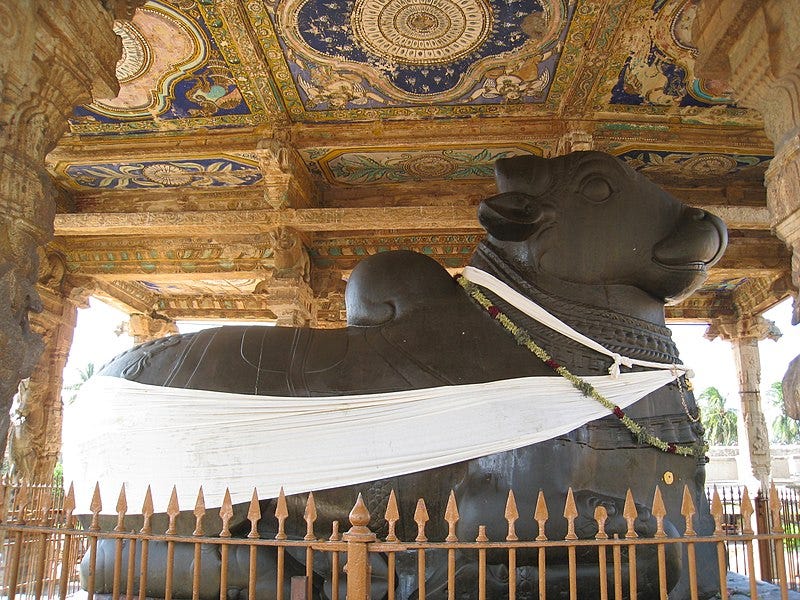
Lord Siva commanded Nandi to move aside to enable Nandanar to have His Darshan. Nandi complied with the orders and moved aside. Thus, Nandi aids other devotees to get the blessings of the Lord irrespective of caste and creed. The message from Nandi shows that every Jeevatma should focus only on serving the Lord.
Goddess Parvathi – Simha
“Simha – the Lion” is the vehicle for Goddess Parvathi. Durga kills Mahishasura by mounting on the Lion. The vehicle depicts the power of a woman who controls anger and pride and saves the world from the wicked.
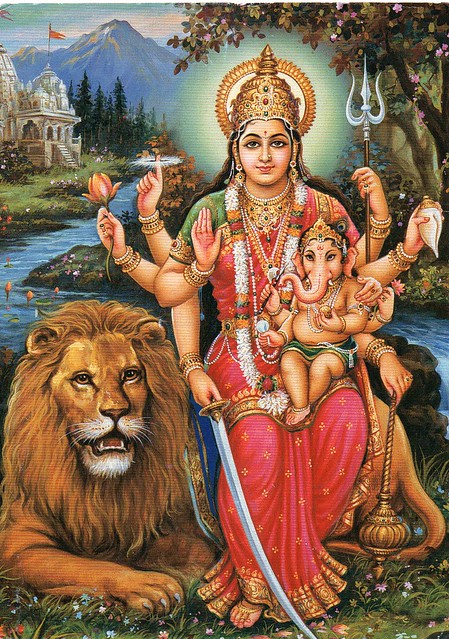
Lord Vishnu – Garuda
“Garuda –the Divine eagle” is the vehicle for Lord Vishnu. He was the son of Sage Kashyapa and Vinata. To liberate his mother from slavery, he went to heaven and brought back ambrosia for his stepmother, thus performing the toughest job. Such is the power of Garuda. He symbolizes speed and power.
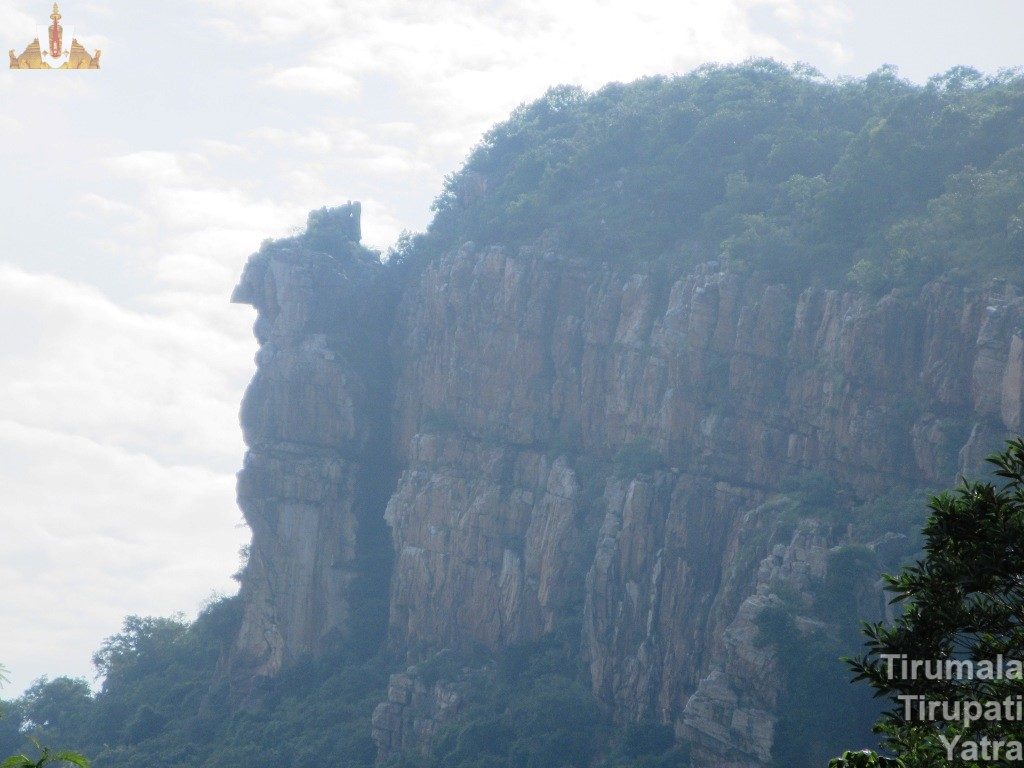
Many ancient texts praise Garuda as Pakshiraja–the King of Birds. Garuda Purana is one of the puranas categorized as Saatvik Purana. It has the dialogue between Garuda and Lord Vishnu. Garuda is praised in many puranas as a savior because he takes the Lord with great speed to enable him to save the devotees in time.
A classic example is Gajendra Moksha where the Lord mounted on Garuda saves the elephant. It is believed to be auspicious to remember Garuda Seva and Gajendra Moksham while waking up in the morning.
Garuda also symbolizes the Vedas. It is also said that the wings of Garuda always sound Vedic hymns. He is also praised as Suparna, Vainateya, Nagari, Jitantak, Nagbhishan, Garutman, Vishari, Vrihadtantrasaar, Ajit, Vishwaroopi, Khagshresta (best among birds) and Kashyap Nandan. One can identify the Vishnu temple from the outside by seeing Garuda’s statue on the walls of the temple.
Some temples are famous for Garuda. Naachiyaar Kovil near Kumbakonam is famous for Stone Garuda (Kal Garuda). This is the place where Garuda arranged for the marriage of Vanjulavalli Devi and Lord Srinivasa. Here, during Garuda Seva, Garuda becomes heavier when going out of the temple and becomes lighter when entering the temple. Garuda Seva in Kanchipuram, Tirumala, and Sri Rangam is very famous. Amrutha Kalasam offered to Garuda cures various diseases.
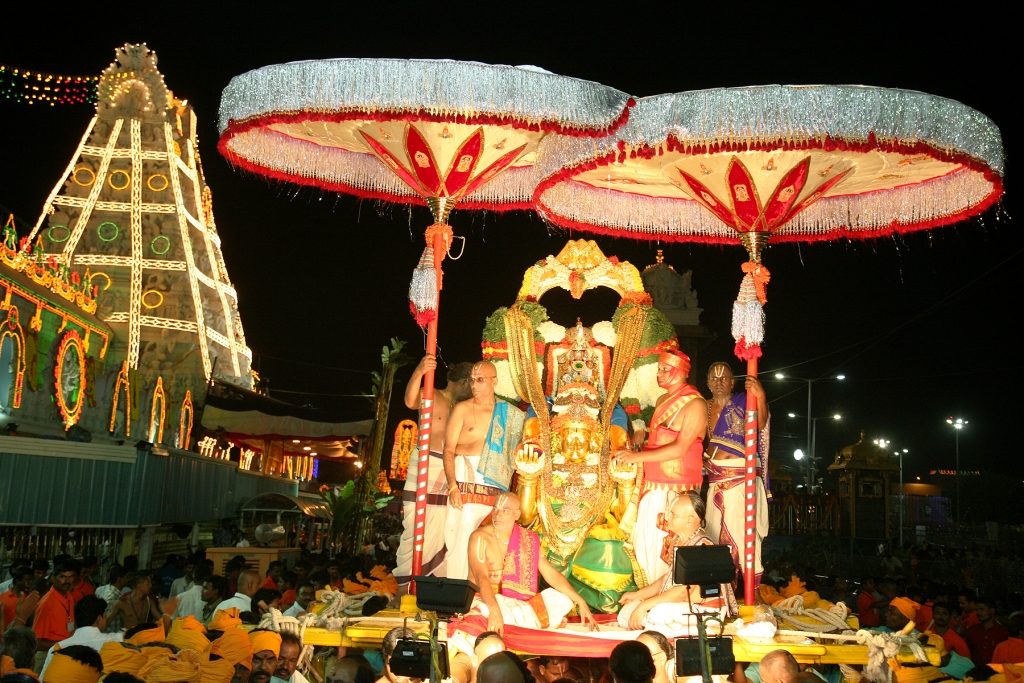
A few villages near Tirunelveli have a practice of performing special Abhishekam and dressing (Sattai Sathal) for one of the Garuda Statues seen on the top of the temple wall. During annual Brahmotsavas, the Garuda flag is hoisted on the main mast and it is called “Dwajarohanam”. Sri Rangam Garuda is quite huge and magnificently painted with beautiful natural colors. Garuda wore snakes as his ornaments.
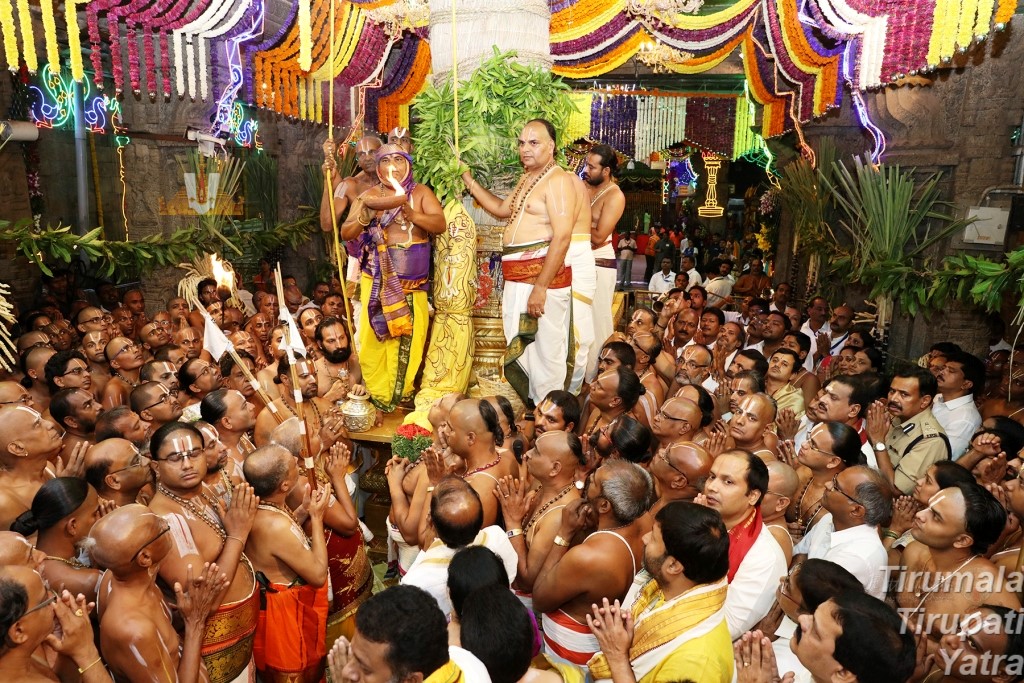
There are many songs mentioning Garuda like “Garuda Gamana, Garuda Dhwaja” etc.
Famous Shloka “Mangalam Bhaghavan Vishnu Mangalam Garudadhwaja” praises the Lord along with Garuda. Garuda was born as Perialwar, father of Sri Andal. Hence, Srivilliputtur’s inner shrine has Garuda along with Lord Rangamannar and Sri Andal. “Pallandu Pallandu” divya prabhandam was sung by Perialwar when he saw the Lord with his consorts mounted on Garuda and gave him darshan. The Garuda Flag of Lord Vishnu indicates the “Speed, Power and Dharma”.
It is also believed that the darshan of Garuda will cure diseases and bring prosperity.
Goddess Mahalakshmi – Elephant
“Elephant” is the vehicle for Goddess Mahalakshmi. We can see mostly Mahalakshmi in a sitting posture with two elephants on either side at the entrance of a temple or house as it is considered very auspicious. An elephant is a symbol of power and prosperity.
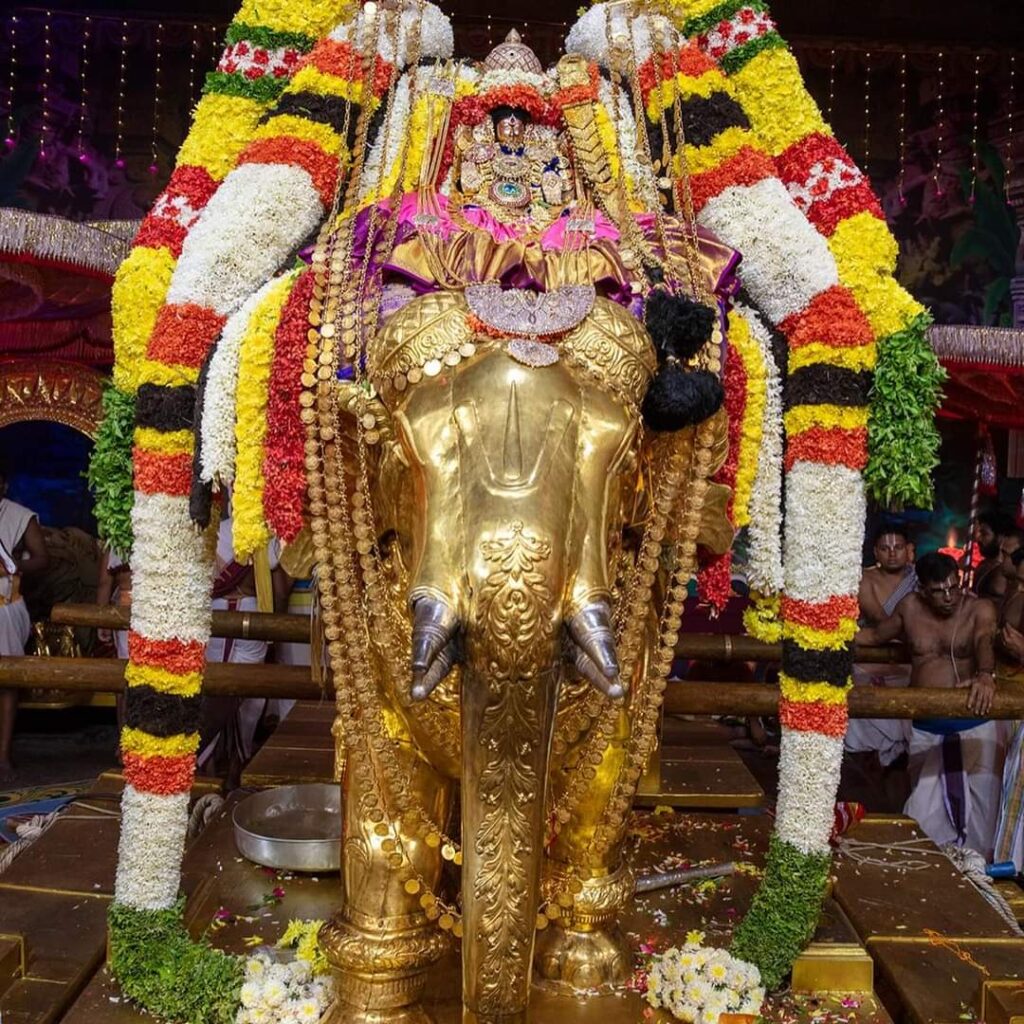
Goddess Lakshmi is also known as Gaja Lakshmi. Gaja Vahana seva is auspicious to Goddess Padmavati Devi in Tiruchanur as Garuda Seva to the Lord. The Paraphernalia from the Lord of Seven Hills is brought on the elephants to Goddess Padmavathi Devi during Panchami theertham during Brahmotsavas.
Lord Brahma-Hamsa
“Hamsa–the Divine Swan” is the vehicle for Lord Brahma and Goddess Saraswati. The word Hamsa is a combination of two words “Aham” +” Sa” which is “I am He”. This reveals that one can get enlightened by the Supreme Personality of Godhead. Knowledge, wisdom, purity, peace, and truth are imparted.
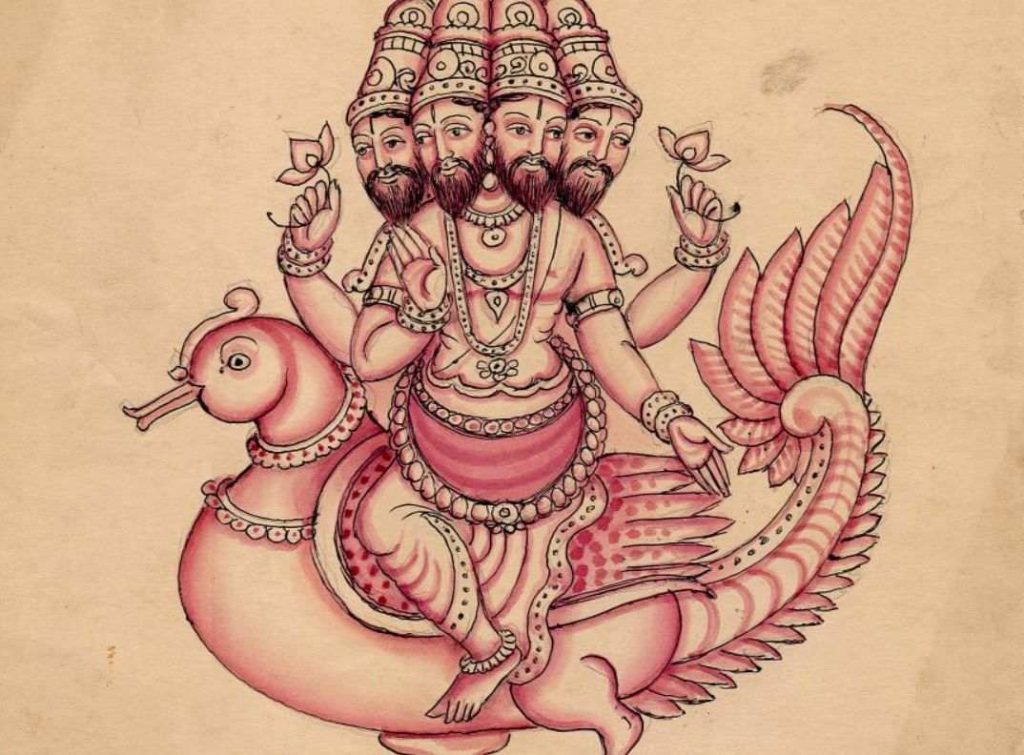
Lord Indra – Airaavatha
“Airaavatha – the white Elephant” is the vehicle for Lord Indra, King of Heaven. He is praised to be a king of elephants. It stands at the entrance of (Svarga) heaven. Some texts reveal that Airaavatha emerged during the churning of the Milky Ocean. Airaavatha in Puranas is praised as a symbol of protection and success.
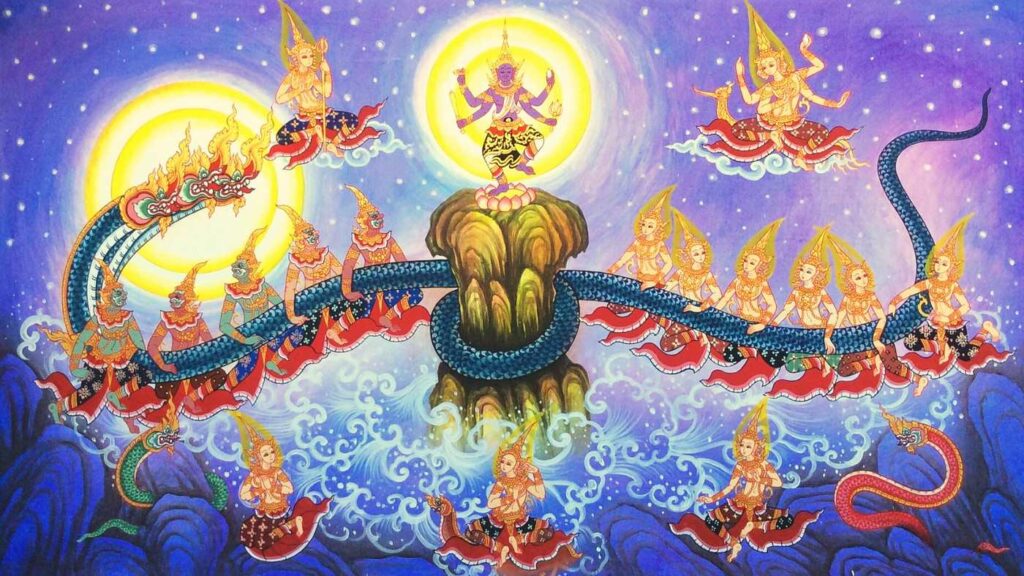
Vahana symbolizes a strong relationship between Paramatma and Jeevatma like that of Master and Servant. They may appear two different individuals but the truth is that Jeevatma is controlled by Paramatma. The vahana is the foremost Bhakta who helps other Bhaktas in getting the blessings of the Lord by carrying him to them. It also shows the loyalty towards the Lord. It points to the easiest way to approach the Lord and get his blessings.
All the Vahanas have a special power of cleansing the mind, body and giving us positive energy. Let’s be blessed more when we get the Darshan of the Lord in these vahanas. We should also look forward to every moment to get the opportunity to serve the Lord like Vahanas.
